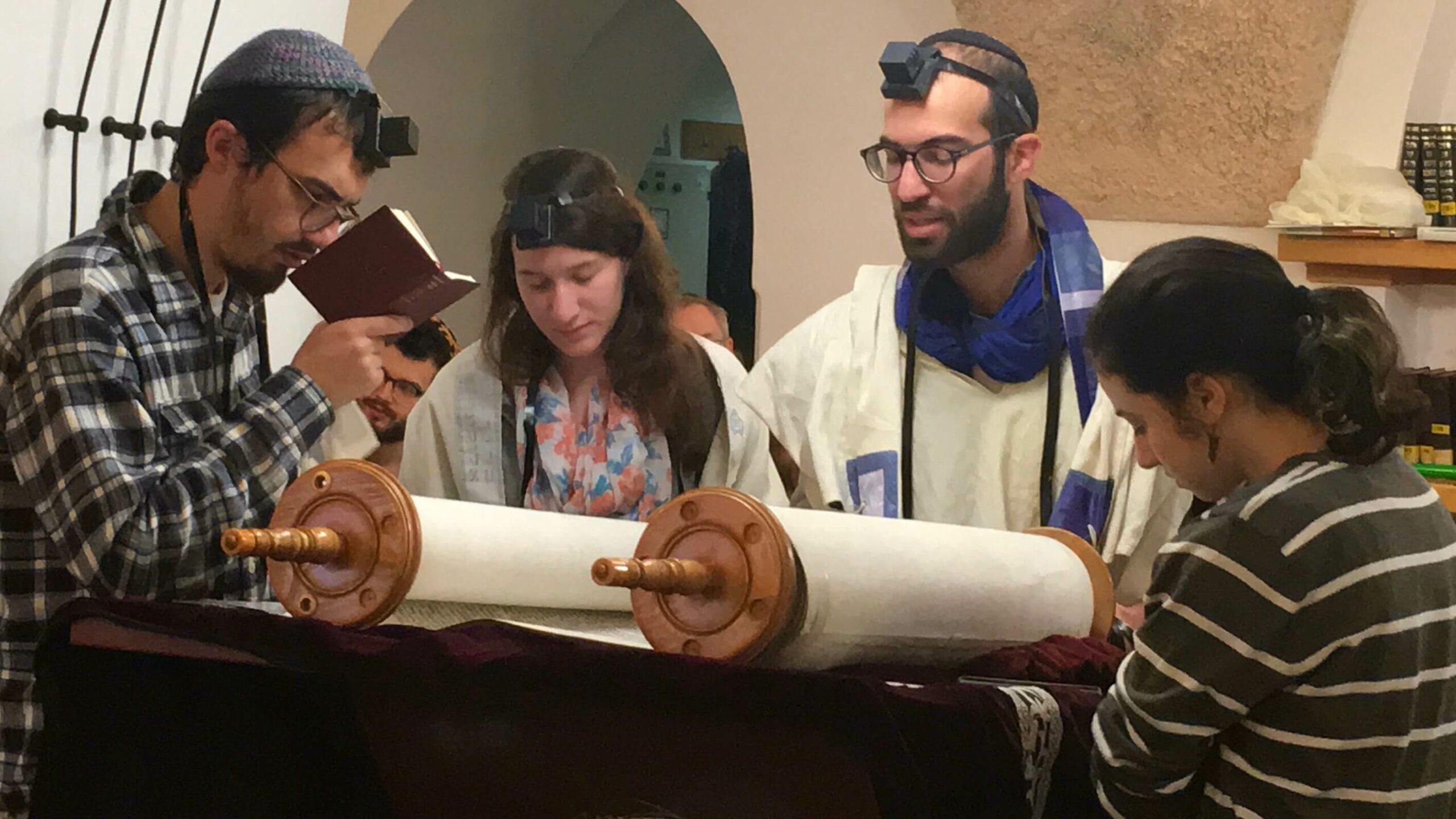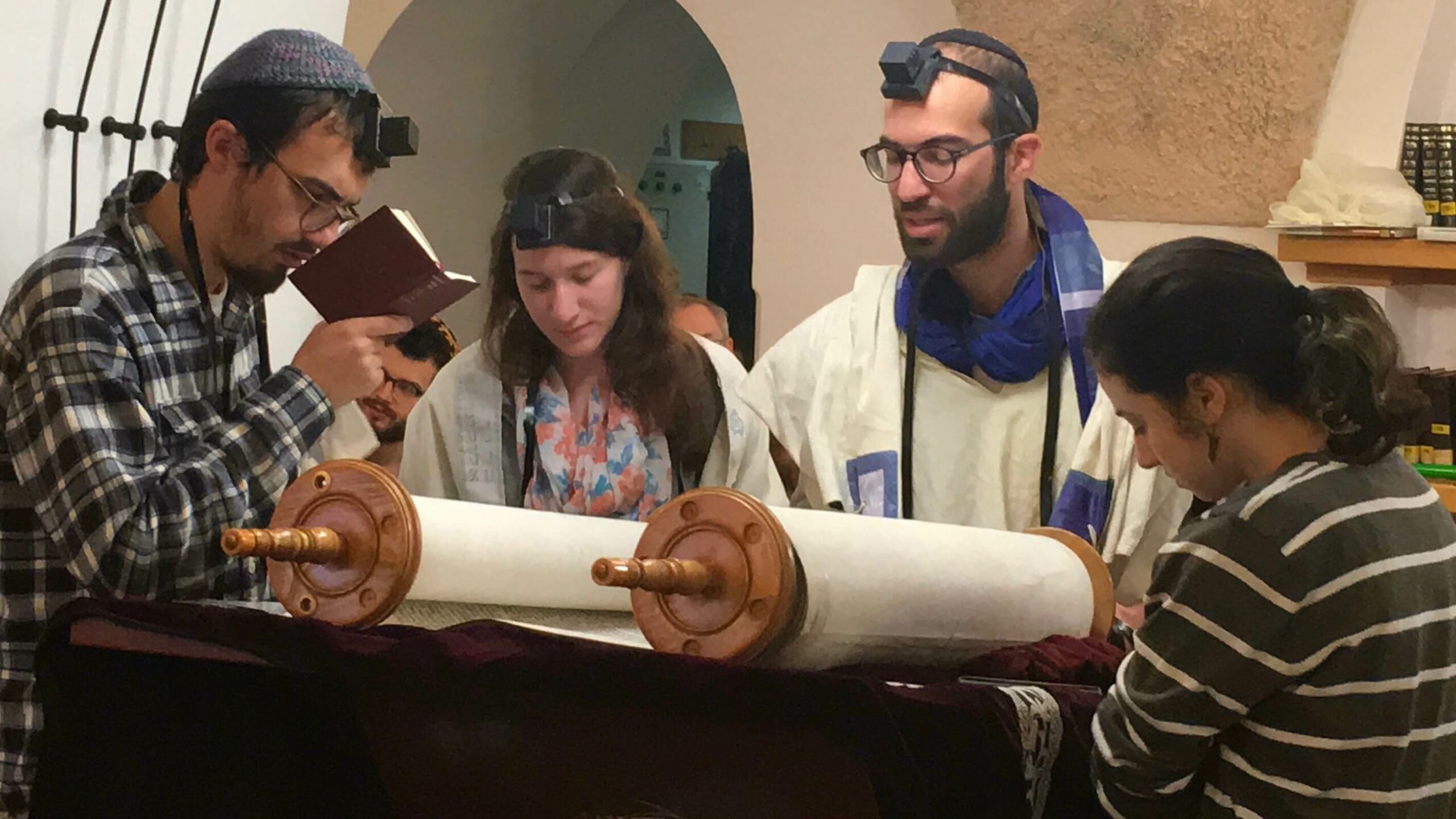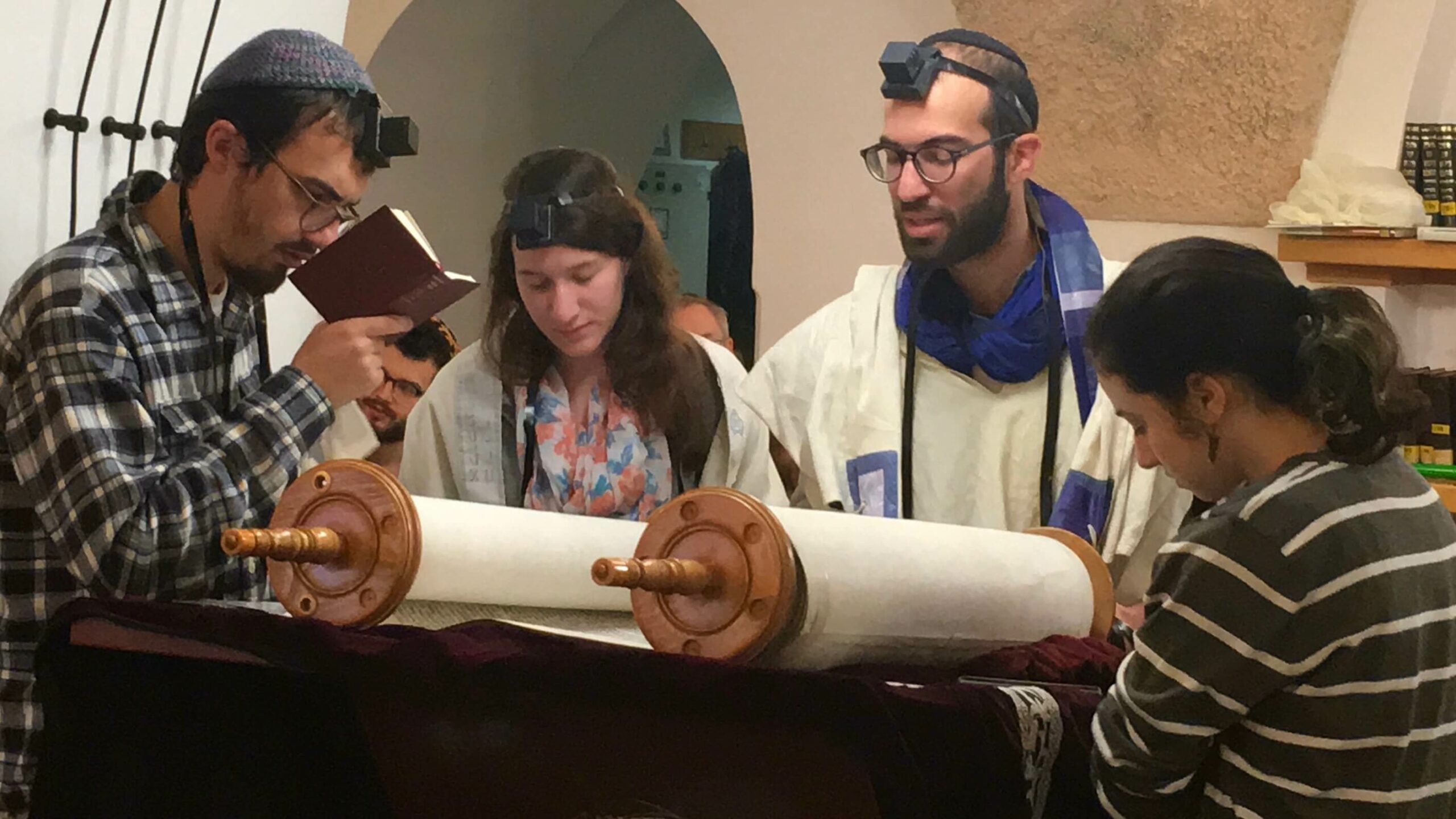

TORAH SPARKS (print friendly version)
Parashat Tetsaveh
Shabbat Zachor March 7, 2020 | 11 Adar 5780
Annual | Exodus 27:20-30:10 (Etz Hayim p. 503-518; Hertz p. 339-349)
Triennial | Exodus 27:20-28:30 (Etz Hayim p. 503-508; Hertz p. 339-342)
Maftir | Deuteronomy 25:17-19 (Etz Hayim p. 1135-1136; Hertz p. 856-857)
Haftarah | 1 Shmuel 15:2-34 (Etz Hayim p. 1280-1285; Hertz p. 995-998)
D’var Torah: Dress to Impress?
Rabbi Joel Goldstein, Conservative Yeshiva Alumnus & Campus Rabbi at Syracuse University Hillel
Several years ago, I overheard two colleagues debating how one should dress when praying before God. One argued that we should wear nice clothing so as to be presentable before the King of Kings. God deserves a modicum of respect, and one way we show respect is by putting on nice clothing. The other colleague responded that God should not be fooled or impressed by sartorial choices, but instead accept people as they are.
Parashat Tetsaveh details the installment of Aaron and his sons as priests of God and includes a description of the priests’ special vestments. The incredible details imply that the garments are incredibly important. God tells Moses to make the clothes for Aaron, “To sanctify him to serve Me,” (Exodus 28:3); the clothes are necessary for the service of God. The Babylonian Talmud (Zevachim 88b) notices that the commandment to make the clothing for Aaron’s investment is closely followed by a list of the sacrifices that are part of the investment ceremony (Exodus 29). The Talmud concludes that just as sacrifices atone for the sins of Israel so too the priestly garments atone for the sins of Israel. Elsewhere (Yoma 72b), the Talmud claims that “If it were not for the priestly garments, no remnant of Israel would remain.” It seems that God does care about clothing, at least for Temple service.
But that might be a hasty conclusion. Rashi, commenting on the Talmud in Yoma, explains that the priestly vestments atone because through them the sacrifices are brought. That is, the garments do not directly atone for Israel’s sins — sacrifices do. Only because the clothing is necessary to perform the sacrifices do the vestments have an effect on God’s forgiveness. If Rashi is correct, we must wonder why the priests need special garments at all.
Rabbi Menashe Klein explains Rashi’s commentary on the priestly garments by claiming that Rashi meant that the garments only atone for the community, but not for individuals (Mishneh Halakhot 17:201). He claims that the garments atone for only part of the sin, while the sacrifices fulfill the remaining atonement. Based on the continuation of the Talmud on Zevachim 88b, he suggests that the garments atone for the public piece. For instance, if a murder occurs, the garment atones for the public’s culpability, but not for the murderer. Or if gossip is spread publicly, the garments atone, but if spread privately, the sacrifices atone.
Unpacking Rabbi Klein’s claim, appearance matters because it fulfills a public function. Dressing in a decorous manner shows others and God that optics are important. By commanding the priests to wear particular, specialized garments, God reminds us that the first step in fixing our issues as a society is based on appearance; we must present ourselves in a dignified manner. However, presentation is merely a first step. It is not sufficient to look good; the appearance must be in service of proper action. In the priestly service of God, proper action is represented by the detailed and complicated steps of performing sacrificial offerings.
In our daily lives, without a Temple, the story of our parashah reminds us that it is not sufficient to act in a particular manner, but that it is also important for our acts to have proper optics. Otherwise, those actions have a limited effect on the broader community. However, having good optics is a first but insufficient step to actually achieve a Godly life. We also need proper action which is carefully considered and attentive to detail. Only then can we truly walk in God’s ways.
Parashah Study: A Man in Uniform
Vered Hollander-Goldfarb, Conservative Yeshiva Faculty
Text: Shemot 28:1-3 (1) And you, bring close to you Aharon your brother and his sons with him …to be priests to Me… (2) And you shall make sacred garments for Aharon your brother for honor and for splendor. (3) And you, speak to every wise-hearted person whom I have filled with a spirit of wisdom, that they make Aharon’s garments to consecrated him, to be priest to Me.
- Aharon will get sacred garments. Why do you think that he will be wearing special clothing? Sanctity also means ‘separate’. What might that add to our thoughts about the garments?
- Special garments are a social statement. Some are strictly ordained (such as police officers); others have loose parameters (bridal gowns?) What is the purpose of dressing in such garments?
- What are the positive aspects of uniforms? When are they negative?
Commentary: Haktav Vehakabala (Rabbi Yaakov Tzvi Mecklenburg, Germany, 19th century) Shemot 28:2
For honor and for splendor – for honor of God, blessed be He, for they are sanctified garments for His service. And for splendor so the Kohen will instruct awe on all who surround him, for they are his disciples who are inscribed on his heart and his shoulders [on the breastplate and stones on the shoulder pieces.]
- Haktav VeHakabala divides the purpose of these garments into spheres of influence. What spheres are connected to his garments?
- How do the garments affect the Kohen? Try to think of the various spheres connected by the garments. Based on this commentary, how do you understand the role of the Kohen Gadol?
Commentary: Rashi Shemot 28:3 To consecrate him, to make him a Kohen for Me – to consecrate him: to initiate him into the kehunah through the garment [so] that he would be a kohen to Me. The expression ‘kehunah’ means service…
- How does Rashi understand the purpose of these garments?
- What does it mean to be a Kohen, according to Rashi? What clothing do such positions wear today? Why do we ask them to wear uniforms?
A Thought: Dwight D. Eisenhower “When you put on a uniform, there are certain inhibitions that you accept.”
- How does this connect to the position of Kohen Gadol?
- In addition to the restrictions, are there things that you can expect when you put on a uniform?
D’var Haftarah: The Plot Thickens
Rabbi Mordechai Silverstein, Conservative Yeshiva Faculty
The saga of the antipathy between Bnei Yisrael and the tribe of Amalek runs through four books of the Tanakh (Bible). The first episode is found in Sefer Shemot (Exodus 17:17:8-16), where we take in the actual battle; the second, in Sefer Devarim (Deuteronomy), where the command to extirpate the tribe is made explicit; the third, records the story of the prophet Shmuel’s demand that King Sha’ul (Saul) carry out this ruling and Sha’ul’s subsequent failure to fulfill this ruling in full; and the fourth, the climax, the story in the book of Esther, where Mordechai, a descendant of the tribe of Binyamin, Sha’ul’s tribe, acts as Sha’ul’s surrogate to finish Sha’ul’s incomplete action.
The story begins in Shemot, which recounts a difficult battle, overseen by Moshe and carried out by Yehoshua. There, Moshe commands Yehoshua to blot out the memory of Amalek (Ex. 17:14). In Devarim (25:17-19), the acrimony for Amalek is ratcheted up. Amalek is remembered for its egregious transgression of the rules of war by attacking the weak and defenseless while doing battle with Bnei Yisrael. The heinous crime called for the memory of Amalek to be wiped out in perpetuity.
Later on, the Prophet Shmuel charged King Sha’ul with fulfilling this commandment: “I remember that which Amalek did to Israel, how he set himself up against him in the way, when he came up out of Egypt. Now go and smite Amalek and utterly destroy all that they have, and spare them not…” (verses 3-4) However, Sha’ul failed to comply in full, leaving the Amalekite king, Agag, alive. Shmuel berated Sha’ul accordingly and finished the job himself. This proved the downfall of Sha’ul as king.
This is where the Book of Esther picks up the story in order to rescue the honor of Sha’ul and his family. The animosity of Haman, a descendent of Agag for Mordechai, of the tribe of Binyamin and vice-versa is born of this conflict. It is an age-old enmity. This is why Mordechai cannot bow before Haman and why Haman cannot suffer the existence of Mordechai or his people. One of the two must defeat the other for the plot to end. The tension in the story is over who will ultimately prevail.
This is what makes the Purim story so cathartic. Since enemies like Haman and Amalek never really seem to disappear, it is nice once a year to imagine this defeat. In fact, it is positively redemptive. And I’ll drink to that. Purim Sameach.








